Dispatch@150: Performing-arts scene in Columbus continues to grow, evolve
When we go to a museum, attend a classical music concert or go to a play, much of the time we are transported to a different time and place.
It’s easy to forget, then, that the arts always reflect their own particular time and place.
Greater Columbus has long been home to an impressive array of major arts organizations that have grown, evolved and adapted over the years.
As The Dispatch reflects on its coverage of the evolution of the arts in Greater Columbus over its 150 years, today we are focusing on the past 25 years, a time of unique changes and challenges.
Longstanding arts organizations, including the Columbus Museum of Art and BalletMet, enhanced or expanded their offerings during those years, while newer organizations, such as Short North Stage, announced themselves as major players to be reckoned with.
During the past 25 years, a variety of institutions and venues either opened their doors for the first time, such as the Pizzuti Collection, or reopened their doors, including the renovated Southern and Lincoln theaters.
And, during periods when the city and world struggled, area arts groups did, too. The financial crisis of the late 2000s contributed to struggles at the Columbus Symphony and Opera Columbus during those years, and the ongoing coronavirus pandemic remains a challenge that has impacted every arts organization.
Yet, on the whole, leaders agree that the arts scene in Columbus has endured the worst of times and thrived during the best of times.
Classical music and dance groups have grown audiences
The leading classical music and dance groups in Greater Columbus have grown their audiences, expanded their footprints and reimagined how they do business.
Although most of the major players in this category were many decades old even a quarter century ago — the Columbus Symphony traces its origins to 1951; BalletMet and the ProMusica Chamber Orchestra were both founded in 1978; and Opera Columbus was founded in 1981 — leaders point to those years as a period of progress.
“It just seemed to be a city that was full of artistic things,” said former BalletMet Artistic Director David Nixon, who led the troupe from 1994 to 2001. “It was the beginning in Columbus of really trying to be a stronger arts community.”
Major Downtown theaters were renovated and reopened during those years — the Southern Theatre in 1998 and the Lincoln Theatre in 2009 — and long-existing groups enhanced their offerings.
“Most of the organizations were established a quarter century ago, but it certainly wasn’t the case, in even the early 2000s, that you could go out every single night and find a whole host of things that you could do,” said Chad Whittington, CAPA president and CEO.
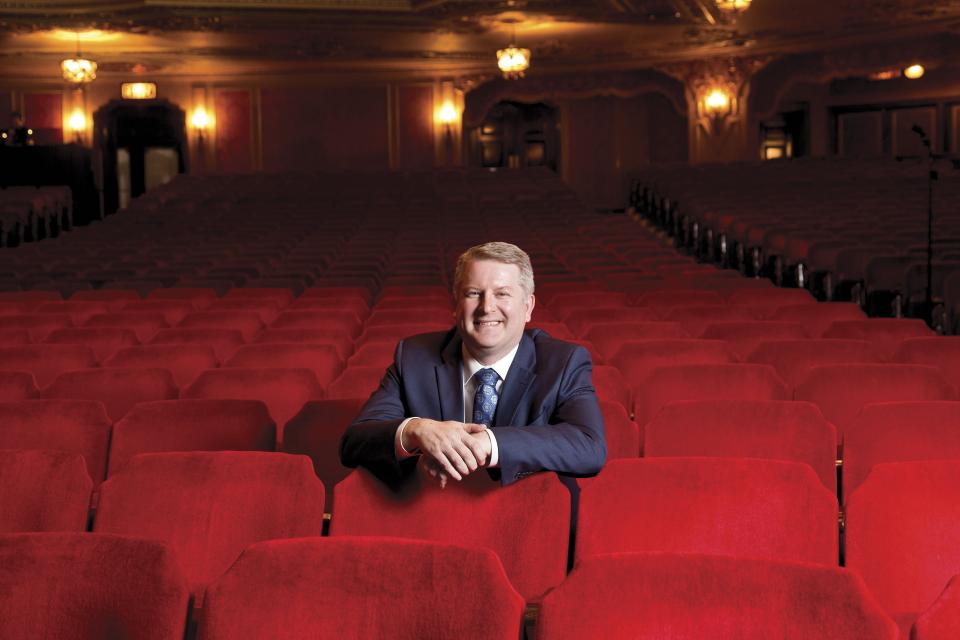
“That is the case now,” Whittington said.
While classical music and dance organizations aim to present perfection on stage, most area groups experienced their share of behind-the-scenes drama along the way.
Starting in 1983, at the instigation of then-new Music Director Christian Badea, the Columbus Symphony began adding numerous full-time musicians to an ensemble that had previously been dependent on part-timers.
“Some people actually referred to it as a ‘housewives’ orchestra,’” said longtime principal bassoonist Betsy Sturdevant. “People had day jobs or housewife jobs, and then they rehearsed at night.”
Then, building on Badea’s transformation of the roster, Music Director Alessandro Siciliani, who led the group from 1991 to 2003, oversaw a period of artistic excellence, encapsulated by a performance at New York’s Carnegie Hall in 2001.
“(Siciliani) was a fine musician, and he was very much loved by the public,” Sturdevant said. “I’ll never forget the COTA buses driving around town with his picture plastered all over them.”
Yet financial problems loomed: Budget deficits, pay cuts and full-time roster reductions came to a head in 2008, when the symphony temporarily ceased making music.
“In January of 2009, we went back to work after being locked out for 7 months,” Sturdevant said. “But at least the orchestra had not dissolved.”
In 2010, when additional financial problems again raised the possibility of the symphony’s dissolution, CAPA, which owns and operates the symphony’s main venue — the Ohio Theatre — assumed responsibility for managing the symphony itself.
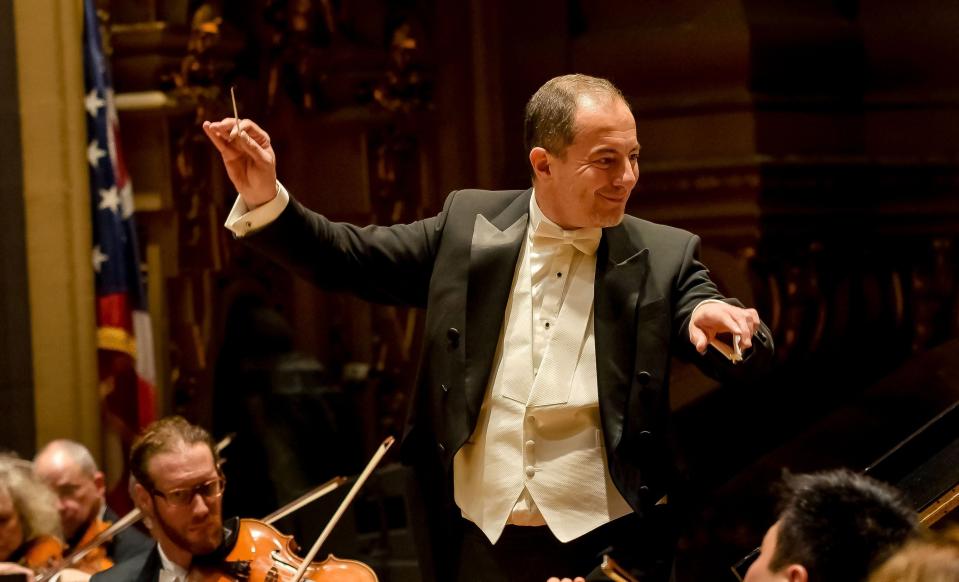
In 2014, Rossen Milanov was hired as the Columbus Symphony’s music director. He was aware of the symphony’s ups and downs, but he liked what he saw — and heard.
“It was an undervalued stock that was going to really explode,” said Milanov, who, since arriving in town, has reshaped the sound of the symphony by hiring some 30% of the current roster.
“I was able to establish my artistic vision and standard,” Milanov said.
Today, the symphony’s budget is smaller than it once was ($9 million, down from $12 million), and its work weeks have shrunk from 48 to 28 weeks, but Columbus Symphony Executive Director Denise Rehg said its musicians reach more audiences than ever — and not only in concert halls.
“We do fewer weeks, but we do far more community activities probably than we used to,” said Rehg, whose organization is now managed independently of CAPA. (Like many arts groups, the symphony still relies on CAPA for administrative support.)
In 2011, CAPA embarked on a similar management arrangement with the then-struggling Opera Columbus.
“The decision to be a part of the solution to make sure we didn’t lose any of those organizations was an easy one for CAPA,” Whittington said.
Although CAPA has also moved on from managing the opera, the organization’s intervention was life-saving, said former Opera Columbus General Director and CEO Peggy Kriha Dye.
“If CAPA had not come in, we would not have an opera company at all, or if we did, it would have been a fraction — a shadow of what it was,” said Dye, who now runs the Virginia Opera.
Under Dye, Opera Columbus established a national reputation for cutting-edge productions that featured rising talent and nontraditional approaches — a reputation that attracted current General Director and CEO Julia Noulin-Merat, who replaced Dye in January.
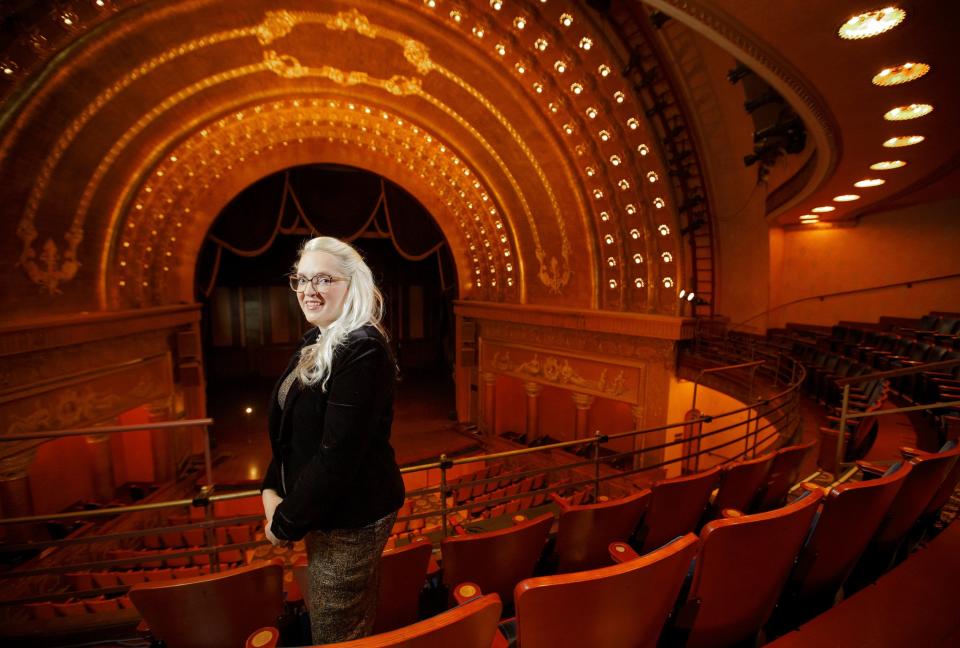
“(The company) is definitely characterized as innovative,” Noulin-Merat said. “People are definitely looking to Columbus for that.”
CAPA’s involvement in the symphony and the opera helped facilitate the multi-organization “Twisted” programs, which, in 2014, 2016 and 2019, featured artists from those groups, plus BalletMet, onstage in the Ohio Theatre.
“Those performances that we did were a collaboration of a type that you rarely, if ever, see in other cities,” Whittington said.
BalletMet made some consequential leaps during the last 25 years, too.
While BalletMet had in the past leaned on mixed-bill programs to supplement its annual “Nutcracker” productions, David Nixon’s tenure saw the debut of ambitious, full-length story ballets.
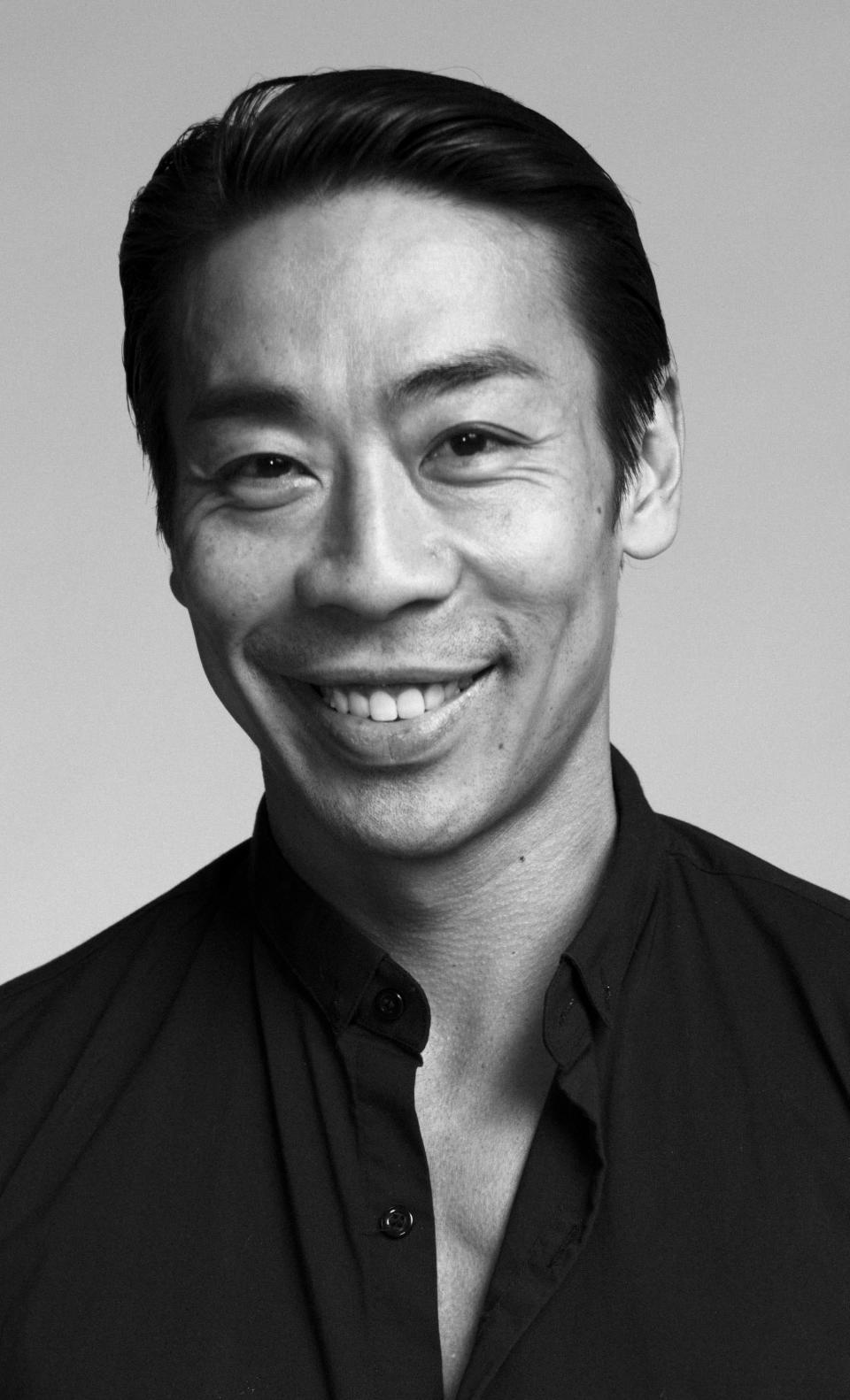
“(Nixon) brought ‘Dangerous Liaisons’ and he brought his ‘Dracula’ — these big ballets that had a big draw and brought people in,” said former dancer Jimmy Orrante.
Since arriving in 2013, current Artistic Director Edwaard Liang has aimed to challenge audiences with works by contemporary choreographers, including Gustavo Ramirez Sansano and Ohad Naharin.
“I really wanted to grow with the company and grow with the community,” said Liang, pointing to the gradual introduction of demanding dances that neither audiences nor company dancers might have been ready for early in his tenure.
Reaching new audiences, in new ways, is a priority for leaders.
When he arrived at the Columbus Jazz Orchestra nearly 20 years ago, Artistic Director Byron Stripling was tasked with adding to its audience base.
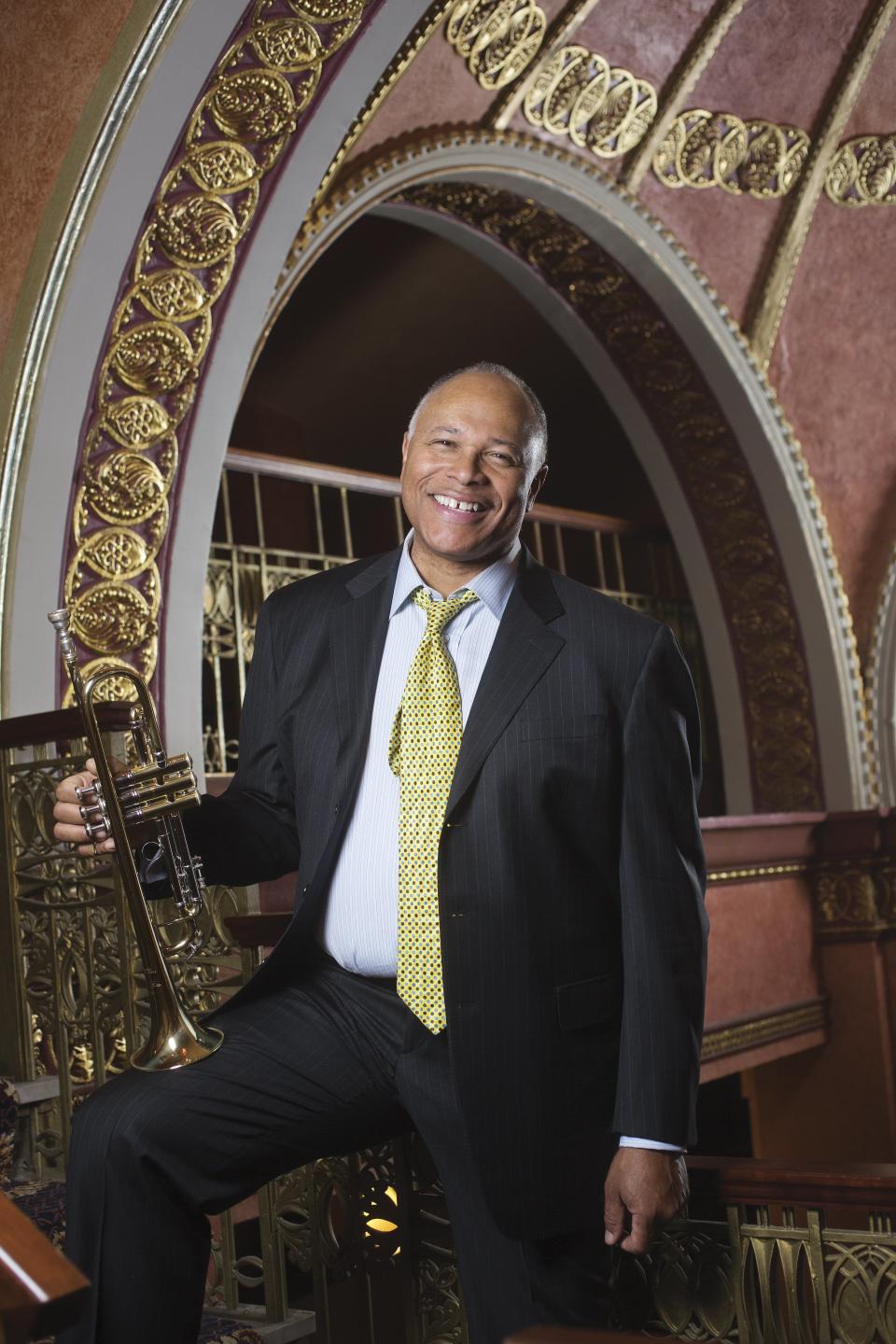
“One of the things that was important for us to do was to transition our audience from older people to less-older people,” said Stripling, pointing to performances that fuse other popular musical genres, such as pop, with jazz. Livestreaming concerts via JAG TV, started last year during the pandemic, and education programs aimed at young people also help the organization develop the next generation of concertgoers.
“Our music that we love will be lost if young people don’t engage and embrace it,” Stripling said.
Twenty years into its existence, ProMusica found a permanent home in the reopened Southern Theatre, but since then has increasingly fanned out to offer concerts throughout Greater Columbus, including summer events at the Franklin Park Conservatory and Botanical Gardens, as well as regular performances in nontraditional venues, including Natalie’s Grandview Music Hall & Kitchen.
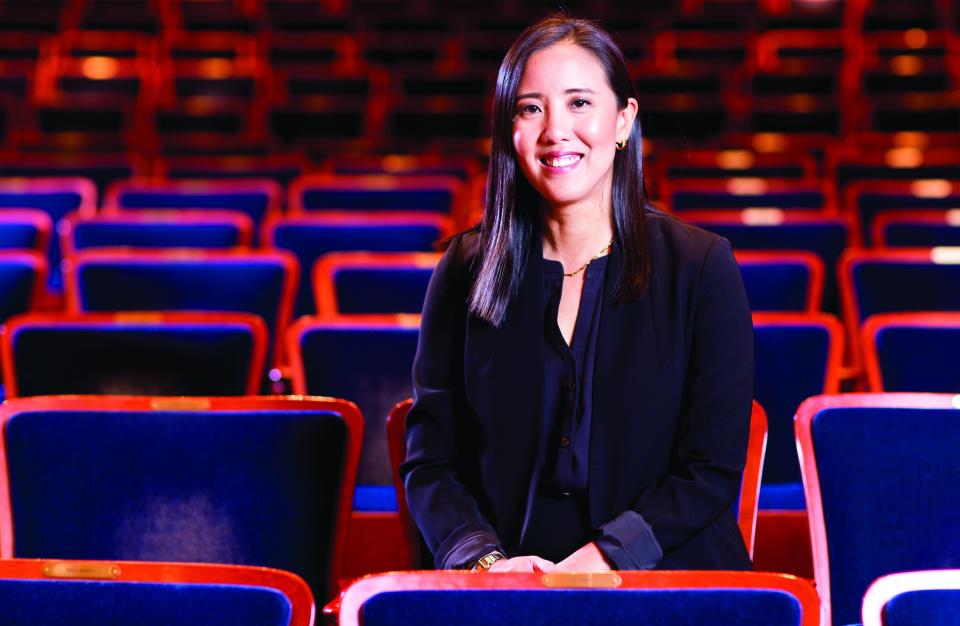
“It’s definitely going to people in different neighborhoods, in their comfort zones,” said CEO Janet Chen.
Sometimes that has meant collaborating with crossover artists or presenting innovative programming designed to attract fresh crowds.
“We always had a core audience who showed up for everything, but we also tried to create interesting, really creative concerts that we would draw people in,” said former Music Director Timothy Russell, who co-founded ProMusica in 1978.
Wherever and however Greater Columbus classical and dance groups have made music or movement, one thing is sure: the groups have come a long way in 25 years.
“There were a lot of things that were in place,” Russell said of the arts a quarter-century ago, “but there were a lot of things that were starting to grow.”
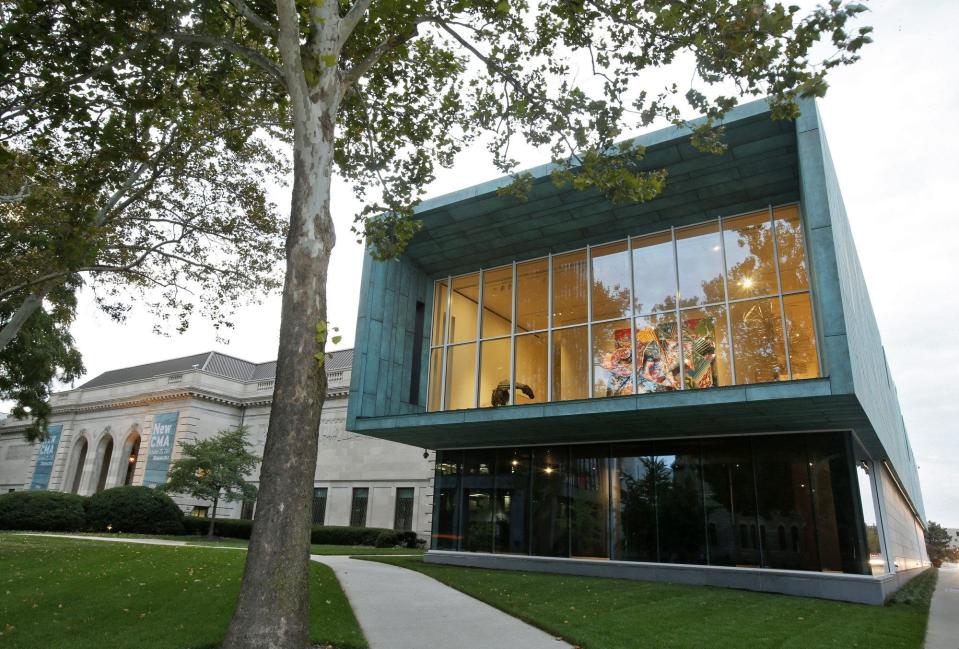
Visual arts growing, making inroads in Greater Columbus
During the past quarter-century in Columbus, the visual arts have enjoyed a robust and fruitful period — albeit with a long interruption caused by the COVID-19 pandemic.
Artists are nothing but creative and resilient, however, adapting to a negative situation with positive acts such as online exhibits, Zoom artist talks and the creation of impromptu, public murals addressing the pandemic and social injustices.
Twenty-five years ago, there was no Walter Wing at the Columbus Museum of Art. The Wexner Center for the Arts was beginning its development into a nationally-respected center for avant-garde arts. The Short North gallery hops were beginning to spawn similar art events in other neighborhoods and Franklinton, on the West Side, was becoming a burgeoning location for warehouse studios and art happenings.
And, in the past 25 years, the annual Columbus Arts Festival (although derailed for two years because of the pandemic), steadily increased its attendance to approximately 500,000 visitors per year.
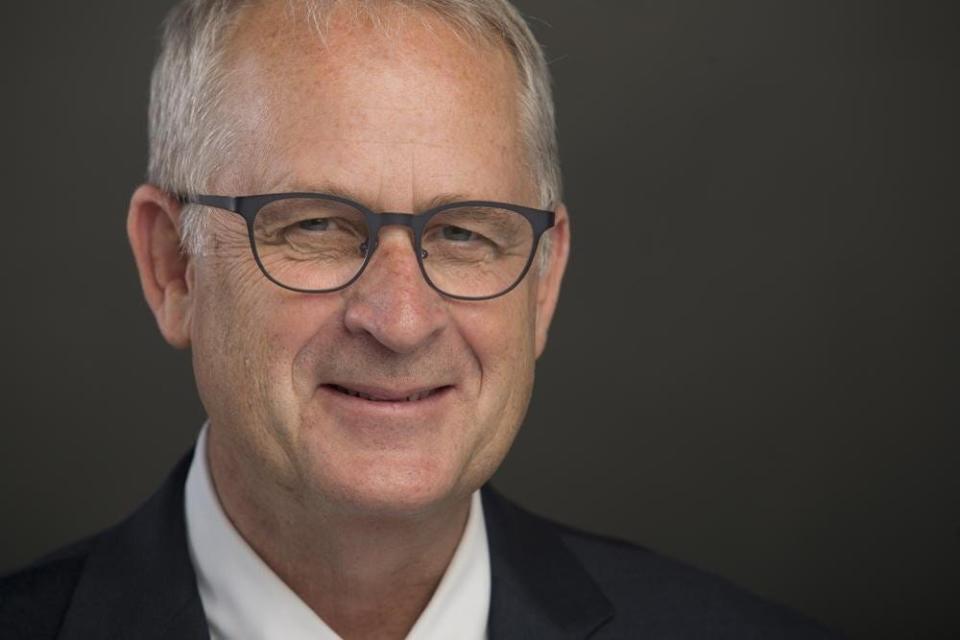
“Overall, the visual arts in Columbus are thriving and there has been important evolution over the last 25 years,” said Tom Katzenmeyer, president and CEO of the Greater Columbus Arts Council.
One of the most-critical and positive phenomenon concerning the city’s artistic climate, according to David Gentilini, director of Capital University’s Schumacher Gallery, is that in the last 25 years, “we’ve gotten rid of the brain drain.”
Gentilini said that many of the creative graduates of Ohio State University, Columbus College of Art & Design and other institutions, rather than heading to the East or West coasts, have been staying and thriving in Columbus.
“Keeping our youth here is making us grow and have more energy,” Gentilini said.
While the Columbus Museum of Art has always lagged behind other Ohio museums, such as the Cleveland Museum of Art and the Cincinnati Art Museum, in the size of its collection and endowment, the Columbus museum has made strides in its educational programs and in becoming a museum with appeal to diverse populations.
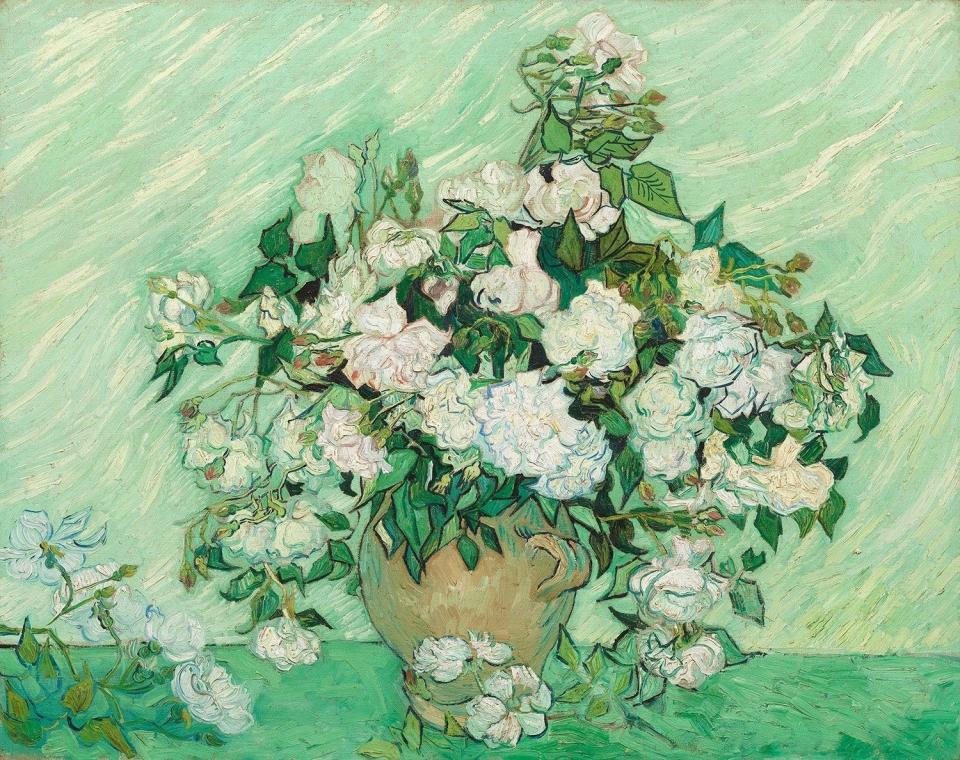
Recent exhibitions, including “Art After Stonewall,” the Aminah Brenda Lynn Robinson exhibit and the current “Through Vincent’s Eyes: Van Gogh and His Sources,” have been both popular and critically acclaimed. Among other projects, the museum, along with GCAC, recently renovated and turned the home of the late Aminah Robinson into a residency for artists. The museum also obtained governorship of the Pizzuti Collection in the Short North.
Among its numerous exhibits in the past 25 years, the Wexner Center for the Arts has presented respected and popular solo exhibitions by national figures including Cindy Sherman, Mickalene Thomas, Annie Leibovitz, Andy Warhol and John Waters.
Columbus as well as central Ohio is also home to many fine art centers, including CCAD’s Beeler Gallery, Dublin Arts Council, Ohio Wesleyan University’s Ross Art Museum, galleries at Otterbein University, the Ohio Craft Museum, the Columbus Cultural Arts Center, Capital University’s Schumacher Gallery, the Decorative Arts Center of Ohio in Lancaster, and The Works in Newark, to name a few.
Katzenmeyer and Jami Goldstein, vice president of marketing, communication and events at GCAC, said that another plus for Columbus is the gallery scene — with numerous galleries showcasing local and regional art and works by diverse artists.
Jim Keny, co-owner of the Keny Galleries in German Village, described the gallery scene in Columbus as having “a great deal more breadth and depth than that of 25 years ago.
“Many fine galleries which focus on contemporary art have been active and important contributors for decades,” he said.
Additionally, venues not primarily known for their focus on visual art — Franklin Park Conservatory and Botanical Gardens, COSI and the National Veterans Memorial and Museum, among them — regularly offer art or incorporate art in their exhibitions.
Glass art is popular and well-represented in Columbus through Glass Axis with its studio and gallery, and Hawk Galleries.
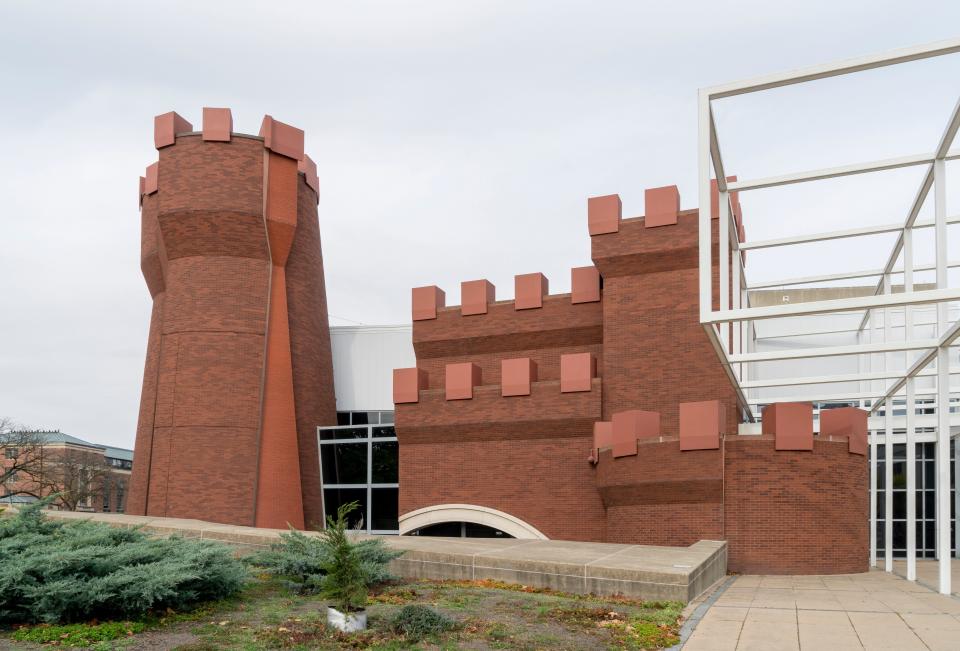
One special event — Cartoon Crossroads Columbus, a comics, art and animation festival — has definitely put Columbus on the map, Gentilini said. The powers behind this festival have been “Bone” creator Jeff Smith and Lucy Shelton Caswell, founder of Ohio State University’s Billy Ireland Cartoon Library & Museum, another Columbus treasure.
What needs to happen to create an even better visual arts scene in Columbus?
More funding, of course, the arts leaders said. Katzenmeyer said that the 5% Columbus ticket fee, passed in 2018, is a “game changer” and will provide new public dollars to invest in all the arts. Keny argued for more endowment funds for the Columbus Museum of Art.
Gentilini said the city needs to acquire more works of public art including something that would serve as a signature piece for Columbus, along the lines of the “Bean” (“Cloud Gate” by sculptor Anish Kapoor) in Chicago.
“We have the ART sign at CCAD, the deer sculptures on the Downtown bridges and the Topiary Garden (that recreates Seurat’s “A Sunday Afternoon on the Island of La Grande Jatte”) and Lichtenstein’s “Brushstrokes,” he said.

“But remember, a lot of people hated ‘Brushstrokes’ and even the deer when they first came out, and now they love them. … That’s the thing with public art. People hate it until they become used to it and then it becomes their brand.”
A positive note from the end of the year was that the Edwards Cos. is proposing a new Downtown aerial sculpture by artist Janet Echelman. The blue and red fabric piece would float over Gay Street, straddling North High Street.
Other areas in which the city could improve, said artist Michael Bush, is to increase representation of diverse artists in galleries and to designate local artists for major projects before opening them up to national calls.
“We have some amazing, talented artists in this city and to keep them here, we need to make sure there are opportunities to allow them to shine.”

A few of those who have shined on the national scene are Columbus recipients of MacArthur “genius grants” — Aminah Robinson, Ann Hamilton, and in 2021, poet Hanif Abdurraqib.
Keny would like to see Ohio’s regional art museums and centers continue to support the excellent artists from the state so that the established art centers on the coasts are reminded that talent exists in the center of the country. Locally, he said, venues should continue to promote the home-grown.
“The Ohio State Fair’s annual nationally juried art exhibitions, which have taken place for decades, is another example of support for often under-recognized artists at a large, well-attended venue,” he said.
Gentilini, who has worked at Schumacher for 20 years, believes that Columbus has made great strides in the past quarter of a century.
“When I started, we were still ‘Cowlumbus,’” he said.
“Now we’re a fashion hub, we have places like the Idea Foundry and the Vanderelli Room in Franklinton — places for up-and-coming artists — and the gallery scene has really filled the void for all sorts of artists and students to display … I think we are now an art designation.”
Collaboration is cornerstone of the theater scene
Despite setbacks, professional theater has flourished in Greater Columbus in recent decades.
Collaborations and community support have been crucial to overcoming recessions, major moves, leadership transitions, the pandemic and other challenges for leading troupes CATCO, Shadowbox Live and Short North Stage.
“The increase in partnerships has been innovative and astounding,” said Stacie Boord, CEO of Shadowbox Live, citing original musicals, revues and sketch-comedy-and-music productions in the Brewery District.
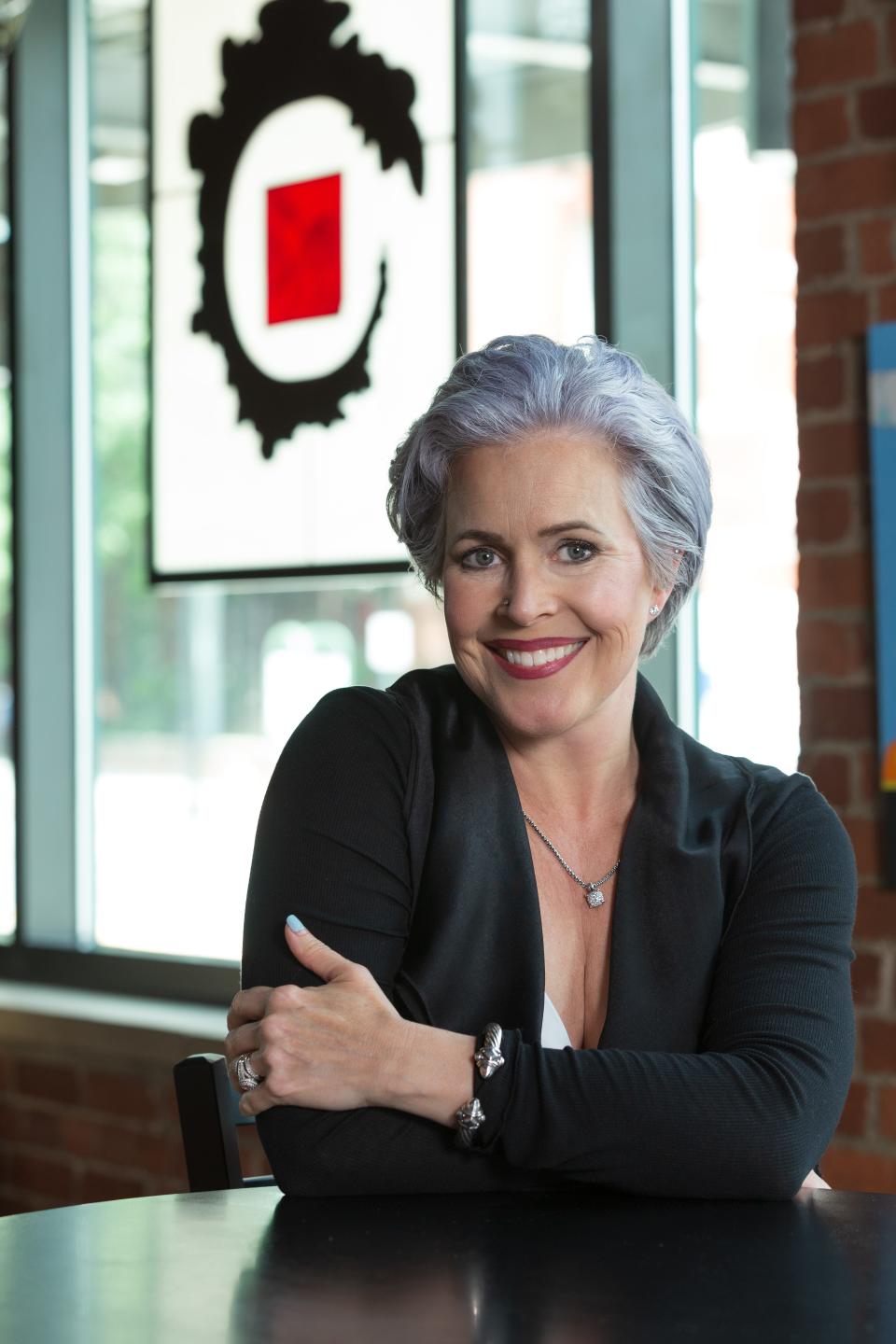
“Columbus’ professional theaters play nice together because our missions are complementary,” said Edward Carignan, artistic director of Short North Stage, presenting modern musicals and plays in its 10th season in the Garden Theater.
“In 10 years, Short North Stage has gone from pioneering occupants of an old theater to a fully realized regional company hiring local and New York talent,” he said.
The troupe built support with extended musical productions (“Pippin,” “Hair,” “Mamma Mia!”); area premieres of rarely staged, darker musicals (“Follies,” “Assassins”), recent Broadway plays (“Hand to God”); and a 2018 August Wilson festival co-presented by eight groups.
“We also had room to grow because there wasn’t a ton of professional theater in this town,” Carignan said.
Although well-established locally, all three troupes are youngsters compared to leading theaters in most other U.S. cities.
“That’s the million-dollar question: With Columbus’ population and vibrant arts scene, why don’t we have the size of theaters that our peers in Cleveland, Cincinnati, Louisville and Milwaukee have? I’ve been working on answering that since I got here,” CATCO Artistic Director Leda Hoffmann said.
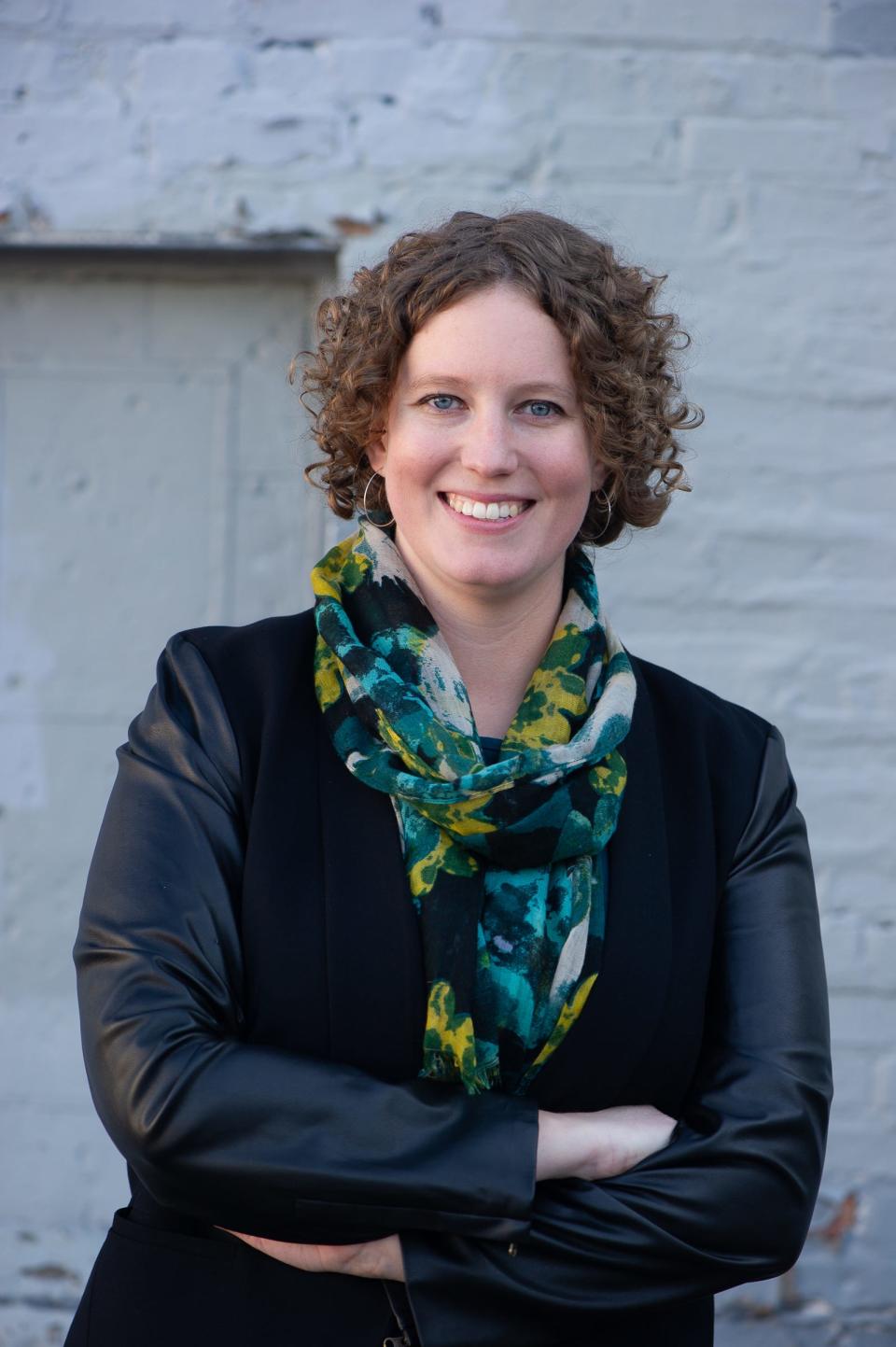
Formerly a producer-director in Milwaukee and Chicago, Hoffmann moved here in mid-2020 to lead CATCO, co-founded in 1985 by Geoffrey Nelson and resident company since 1997, after three moves, in the Riffe Center.
Spurred by deficits from the 2008-09 recession, CATCO merged with Steven Anderson’s Phoenix Theatre for Children in 2010 under Anderson, who retired last year.
“Our survival is a testament to the community stepping up and saying theater is important,” Hoffmann said.
Her socially-conscious first season builds on CATCO’s track record of more than 250 productions of classics and newer works, including area premieres of Broadway musicals (“Fun Home”) and award-winning plays (such as “Red,” a 2013 collaboration with the Columbus Museum of Art.)
“The biggest lessons of the pandemic are that we must stay connected to people, think about our purpose beyond regular programming, figure out new partnerships and tell stories for this moment,” Hoffmann said.
Shadowbox Live, evolving from a 1988 troupe touring Stev Guyer’s rock operas, mastered similar lessons over three decades.
“Our advantage, because we’re artist-run, is using that creativity in business practices as well,” said Boord, who assumed leadership of the reorganized resident-ensemble company after Guyer’s death in 2018 from brain cancer.
“When you have a crisis, artists tend to find possibilities in the brokenness for reinventing and rethinking who we are,” she said.
Shadowbox Live, with a 46-member staff of multitasking “meta-performers,” has overcome several crises — including a 1999 fire that demolished its 1990s Spring Street home, accelerating a move into Easton Town Center’s 220-seat space and the formation of second troupes in the Short North and northern Kentucky.
The company consolidated staff with a 2011 move into its 32,000-square-foot, 300-seat home (which it now owns) in the Worly Building, while raising its profile with free outdoor-park shows (such as Woodstock-themed “Back to the Garden”) and collaborations (“Seven Deadly Sins,” a 2011 rock ballet with BalletMet Columbus; and “Gallery of Echoes,” a 2014 visual/performing-arts collage with the Columbus Museum.)
“With our different programming and moves, it’s remarkable we’ve found a fan base willing to brave the unknown repeatedly to follow us,” Boord said.

“We’re a testament,” she said, “to a city that’s willing to try new things.”
Chad Whittington, the CAPA head, praised all three companies for their strong boards, leadership and resilience.
“I’m bullish on the smart folks running those theaters. Each has identified an audience and each does distinctive high-quality work, so they’re not competing with one another,” Whittington said.
Over the next decade, though, both cooperation and competition could increase as more local theaters raise their profiles — including gay-and-lesbian-themed Evolution Theatre Company, which went professional in 2019, and Red Herring Theater Company, among a half-dozen semi-professional troupes (which pay actors, but not yet a living wage) with professional ambitions.
Led on and off since 1992 by Artistic Director Michael Herring, Red Herring has weathered seven moves, most recently in 2019 from Franklinton Playhouse into a versatile black-box space on the South Side.
“We’re scrappy, but it’s so hard to build audiences without a permanent venue or more marketing and media coverage,” Herring said.
Although he’s optimistic his troupe has room to grow, Herring expressed frustration with ongoing difficulties of sustaining Columbus theater since the abrupt 1993 collapse of 70-year-old Players Theatre Columbus, the city’s leading professional troupe.
“I’m afraid Players Theatre is the ghost that still haunts Columbus, not yet a theater town. The collapse burned subscribers. ... Since then, leading theaters have struggled to get back up to that level of budget and support,” Herring said.
Acknowledging the struggle, Whittington praised their progress.
“For many groups, it hasn’t been easy to keep putting on professional theater in Columbus,” he said, “but today, we have a diversity of grass-roots theaters doing professional high-quality performances that we didn’t have 25 years ago.”
@mgrossberg1
This article originally appeared on The Columbus Dispatch: Columbus performing-arts groups have evolved
